© 2000 Capt. Willis Lamm, Water Supply Officer, Moraga-Orinda (CA) Fire DistrictBackground Criteria Storage Distribution Hyd. Design Placement Installation Codes & Markings Applications Codes & Standards
|
| HYDRANT INSTALLATION |
|
There are a number of common errors made with respect to the installation of
new fire hydrants. Most have to do with variations between preliminary grading
designs and final grading. Others involve specific uses of areas near where
hydrants are installed. If these issues are not monitored, hydrants can end
up being situated in such a manner that they at best look strange and at worst
are difficult or impossible to operate.
Hydrant installation details need to be coordinated among all parties involved at the construction site. If hydrants are being installed in areas to be landscaped or if final grading elevations are not clear, the hydrant design that is specified should easily accommodate placement of riser extensions of various lengths so that the final hydrant installation is compatible with the final grade elevation. Coordination should be made with utility companies in order to ensure that utility poles, vaults and cabinets will not interfere with access to fire hydrants or impede the operation of the hydrants. As a general rule, no equipment or facilities should be within 3 ft. (1m) of the hydrant body nor be placed in front of any hydrant outlet, nor be placed between the hydrant and the roadway. Those persons who are landscaping near hydrants should be apprised of these conditions as walls, plants and other landscape materials must be kept outside the hydrant's clearance space. Hydrant set with both
|
Hydrant set too low
|
|
Photo - Andreas Kühl |

|
|
NFPA Standards Chapter 14
Hydrants shall be protected if subject to mechanical damage. The means of protection shall be arranged in a manner that will not interfere with the connection to, or operation of, hydrants.
Hydrants shall be provided and spaced in accordance with the requirements of the authority having
jurisdiction.
Hydrants shall be placed a minimum of 40 ft (12.2 m) from the buildings protected.
|
| Continue to Part 7 |
Return to Part 5
Return to Information Section
Return to Water Supply Section
Background Criteria Storage Distribution Hyd. Design Placement Installation Codes & Markings Applications Codes & Standards
|
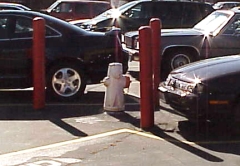
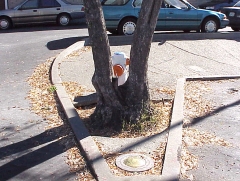

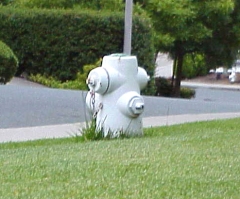
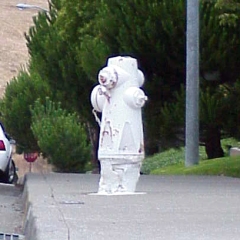
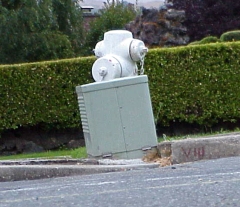

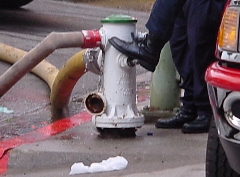 The center of a hose outlet shall be not less than 18 in. (457 mm) above final grade, or when located in a
hose house, 12 in. (305 mm) above the floor.
The center of a hose outlet shall be not less than 18 in. (457 mm) above final grade, or when located in a
hose house, 12 in. (305 mm) above the floor.